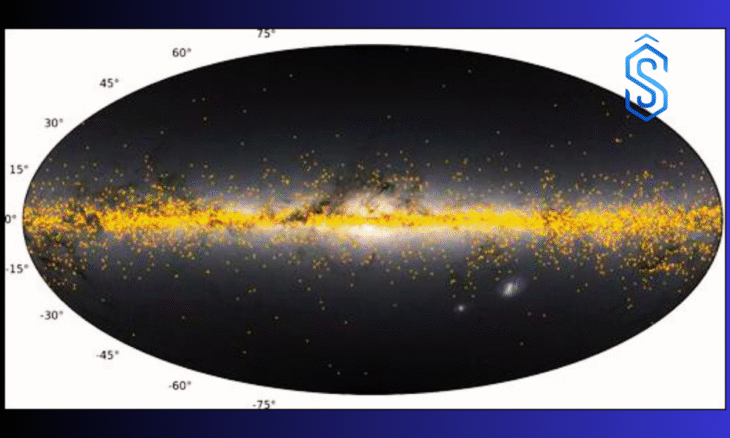New Delhi: Astronomers have developed the most detailed Milky Way Dust Map to date, charting the invisible cosmic dust that dims and reddens starlight across our Galaxy.
The study, led by the Aryabhatta Research Institute of Observational Sciences (ARIES), utilized data from more than 6,000 open star clusters to uncover the intricate distribution of interstellar dust in the Galactic disk.
Mapping the Milky Way Dust Map with Open Clusters
The Milky Way is filled with interstellar clouds of dust and gas that block and scatter starlight, a phenomenon known as “extinction.”
Also Read: Bengaluru: CeNS Researchers Create Flexible Aluminum Battery Technology as Lithium-Ion Alternative
To understand how this dust is distributed, ARIES researchers analyzed open clusters – groups of stars born from the same molecular cloud and located mainly within the thin Galactic disk. Because these clusters act as reliable tracers, they enabled scientists to construct a detailed Milky Way Dust Map.
Findings from the Milky Way Dust Map Study
The research, led by Dr Y C Joshi, revealed that dust in the Milky Way does not form a uniform layer. Instead, it lies in a thin, wavy band known as the “reddening plane,” positioned below the central Galactic plane.
This dust shifts in a wave-like pattern around the Galaxy, with concentrations highest at Galactic longitude 41° and lowest at 221°.
Interestingly, the Sun itself is located about 50 light-years (15.7 parsecs) above this dusty layer. The study also showed that the dust is thicker and denser toward the Galactic center and thinner in outer regions, underscoring the complex and dynamic nature of the Galaxy’s structure.
Also Read: Prof Eknath V Chitnis Remembered for Shaping India’s Space Culture at IISER Pune
Importance of the Milky Way Dust Map
This new Milky Way Dust Map provides astronomers with a clearer picture of how interstellar dust is arranged in our region of the Galaxy. Such mapping is essential for accurately studying stars, stellar formation, and galaxies beyond the Milky Way. It also confirms that much of the dust is confined to a narrow band where new stars are actively forming.
Future Exploration of Milky Way Dust
The study highlights the need for more detailed observations of distant regions to build a complete three-dimensional model of the Milky Way’s dusty structure.
Upcoming missions, including the European Space Agency’s Gaia data releases and the Vera C Rubin Observatory’s Legacy Survey of Space and Time (LSST), are expected to play a vital role in refining the Milky Way Dust Map.




